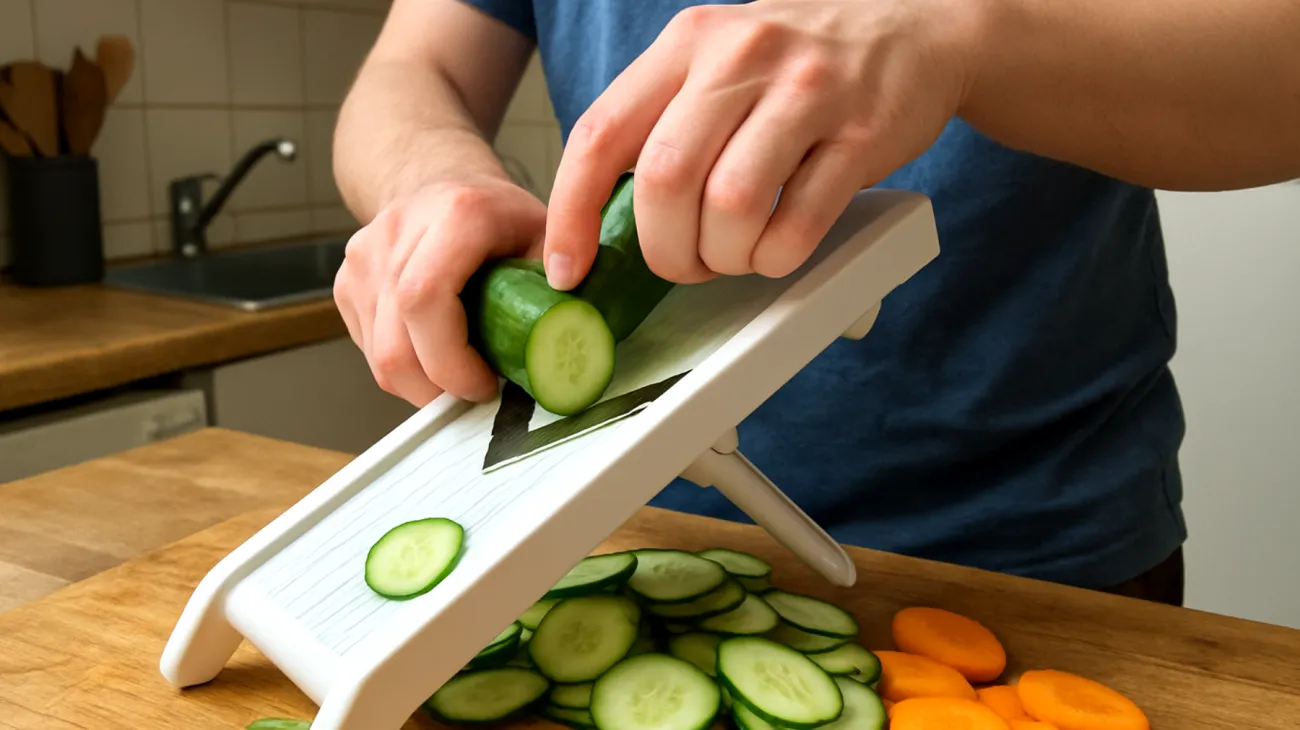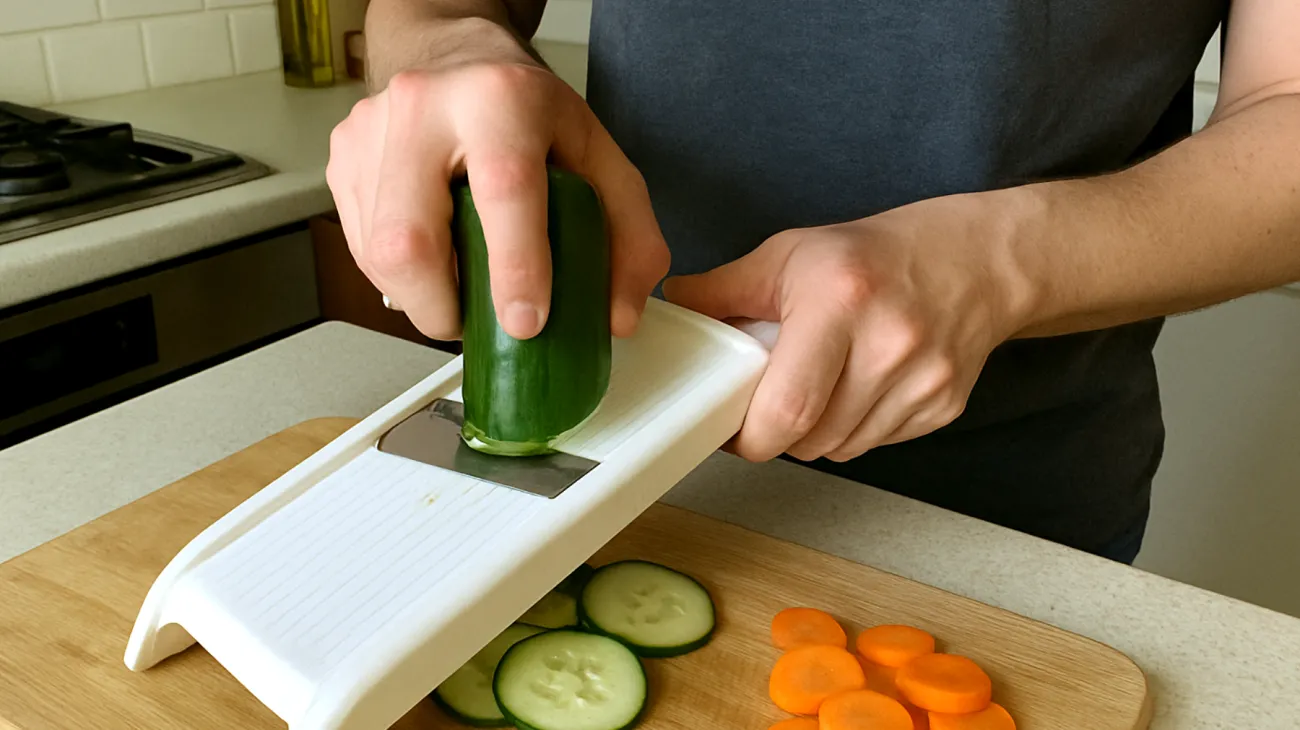Hand Blenders and Household Safety: Preventing Injuries Before They Happen
Quick meals. Silky smoothies. Perfectly puréed soups. The hand blender, or immersion blender, has become essential in modern kitchens, bridging convenience and control in food preparation. But while its power and compact design are its strengths, those very features can become dangerous if overlooked — triggering injuries and electrical accidents more often than many realize.
Behind the sleek plastic casing and spinning stainless steel blades lies a tool capable of inflicting serious harm. According to a study published in the Indian Journal of Medical Sciences, conducted by the Department of Plastic Surgery at a tertiary care hospital in New Delhi, researchers documented 32 cases of mixer grinder hand injuries during just a 54-day COVID-19 lockdown period. These injuries included lacerations requiring suturing, fractures requiring K-wire fixation, amputations requiring stump closure or replantation, and complex injuries requiring flap coverage.
Hand blenders don’t look threatening. That’s why they’re underestimated.
The research reveals a troubling pattern: during the pandemic lockdown, mixer grinder injuries represented 68.09% of all hand injuries, compared to just 13.40% in the previous year. This dramatic spike wasn’t due to defective equipment, but rather increased home cooking combined with distracted usage patterns. The same study found that all 32 patients were females in the 25-35 age group, with injuries occurring on their dominant hand — suggesting that even experienced home cooks aren’t immune to these accidents.
Why Hand Blenders Lead to Unexpected Injuries
Most people use hand blenders with the same casual attitude they reserve for measuring cups. That’s precisely the issue. These tools combine a compact motor, sharp blades, and close user contact — a trio that requires more attention than typical countertop appliances.
The critical injuries tied to hand blenders typically fall into two categories: mechanical injuries from the blades and electrical injuries or device failure due to water exposure. What makes these statistics particularly concerning is how they contradict our perception of kitchen safety. We instinctively approach knives with caution, yet treat powered appliances as benign.
Mechanical Injuries from Blades
The blades of a hand blender rotate at several thousand revolutions per minute. While they’re not openly exposed like a knife, they’re only partially shielded — which gives a false sense of security. The fact that the device is hand-held brings fingers unnervingly close to the cutting zone.
Here’s the problem: many injuries occur after cooking, during cleaning. The New Delhi study specifically found that 12 out of 32 patients (37.5%) were injured while cleaning their mixer grinder without unplugging the device. Hand blenders can cause severe mechanical injuries during cleaning. Someone reaches into the blade guard to remove food, forgets to unplug the device, and — sometimes without fully realizing it — presses the “on” button. The result can be a deep, finger-lacerating injury in less than a second.
Even worse, some blenders have touch-sensitive or easily triggered buttons, making unexpected activation during handling more likely. The research also revealed that 18 patients were injured due to “error of judgment/precision while multitasking,” often involving distractions such as talking on the phone.
Unplugging should be more than a recommendation — it should be instinct.
Electrical Risks from Water Contact
Despite warnings in manuals, it’s astonishing how often users submerge the motor unit of a hand blender in water. The detachable shaft, yes — that’s made to be washable. The motor unit, no. Internal seals in these devices are not made to withstand water infiltration.
Hand blenders should never be submerged in water due to electrical risk. Even minimal moisture inside the housing can cause short-circuiting during use, risk of shock to the user, and corrosion that leads to premature failure.
According to UL 982 safety standards for household motor-operated food preparing machines, specific safety requirements exist precisely because regulatory bodies recognize the inherent risks these devices present. The standards address safety features including blade covers, momentary contact switches, and particular safety considerations for wand-type mixers.
Over time, water exposure becomes a hidden and escalating hazard. What seems like a harmless rinse now could result in device failure — or an electrical jolt — in six months. The distinction between what components can safely contact water isn’t arbitrary — it’s based on fundamental electrical safety principles.
Essential Safety Habits Every Hand Blender User Should Follow
Hand blender accidents occur not because people are being reckless, but because the devices appear too simple to require caution. The research data supports this: the dramatic increase in injuries during lockdown came from experienced home cooks who had likely used these devices safely for years. The difference was context — more frequent use, more distractions, more pressure to prepare meals quickly.

By making specific safety actions routine — not optional — their use becomes dramatically safer without compromising speed or results.
- Unplug the hand blender immediately after each use, before cleaning or moving the device
- Keep fingers and utensils away from the blades while the shaft is attached, no matter how “off” the blender appears
- Only clean the detachable shaft, never the motor unit — use a slightly damp cloth for the motor part and dry it thoroughly
- Let boiling food cool slightly before blending — steam and splashes increase risk of burns and electric damage
- Inspect the power cord regularly for fraying or damage before use
Each habit takes seconds. But each one protects health, avoids injury, and extends the life of the appliance. The medical research makes clear that these aren’t overcautious measures — they’re evidence-based responses to documented injury patterns.
Blending Safely in Real-World Kitchen Conditions
Home kitchens aren’t sanitized labs. They’re fast-moving environments full of distractions: kids needing attention, phones ringing, pots simmering. The danger with small appliances is most acute when we become overconfident — the device is familiar, so we stop paying close attention.
The study from New Delhi provides crucial insight into how real-world conditions contribute to accidents. The researchers noted that many injuries occurred specifically because users were multitasking or distracted — talking on phones, managing multiple cooking tasks, or dealing with household interruptions.
You’ve just pureed butternut squash for soup. The blade is coated with fibrous bits. Resist the instinct to grab a sponge and clean it on the spot. Instead, unplug the unit first. Then detach the blending arm — never clean it while attached. Avoid twisting a towel around the blade area. The easiest and safest way is to rinse it under running water immediately, pointing the blade downward, letting debris fall away from your fingers.
This approach directly addresses the primary injury pattern identified in the research: cleaning-related accidents when the device remains plugged in. Small tweaks in behavior make a big difference over time. What becomes habit becomes protection.
Common Myths That Make Hand Blenders More Dangerous
Misinformation often circulates from one user to another. The medical research helps distinguish between reasonable assumptions and dangerous misconceptions. Here are common assumptions that dramatically increase risk:
“It’s not on, so it’s safe.” The study data shows that many finger injuries occur when users clean the blade without unplugging, believing the button won’t press accidentally. It does. Often.
“It’s just water. Splashing the handle won’t hurt it.” Actually, even minimal water inside the motor casing can corrode internal circuits and pose a future shock hazard, which is why UL standards specifically address moisture protection requirements.
“These things are indestructible. I’ve seen chefs toss them around.” TV chefs use commercial-grade blenders, often with staff handling cleanup. Consumer models aren’t built for carelessness.
The documented injury patterns from the New Delhi study show that even experienced users fall victim to these assumptions. Unlearning these myths can be as important as learning the right steps.
A Safer Kitchen Begins With Mindfulness, Not Fear
What elevates routine use of a tool into dangerous territory is neglect — not malice, not inexperience. The research makes this clear: the surge in hand blender injuries during lockdown came from ordinary people doing ordinary kitchen tasks. The difference was frequency and context, not fundamental recklessness.
We’ve grown used to blending fast, thinking slow. But a safe kitchen is one where the user remains engaged, mindful, and slightly skeptical of simplicity. The documented cases from medical research show that a two-second habit can avoid pain that lasts weeks, or worse.
The hand blender is powerful precisely because it puts control directly in the user’s hand. That control can also go wrong — fast. The peer-reviewed evidence demonstrates that these aren’t theoretical risks, but documented patterns of injury occurring in real kitchens to real people.
Hand blenders will continue to accelerate home cooking. They’ll stay compact, fast, and indispensable. The research from medical institutions provides clear guidance on managing their risks. The only question is whether we can match their power with equal respect. If we do, we keep the best parts of their design — while removing the documented patterns of risk that send people to emergency rooms with preventable injuries.
Table of Contents

